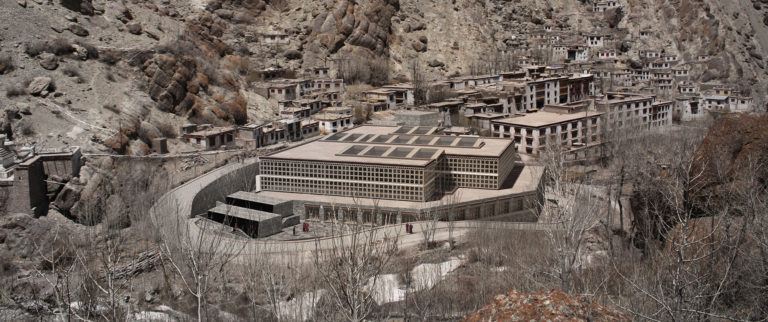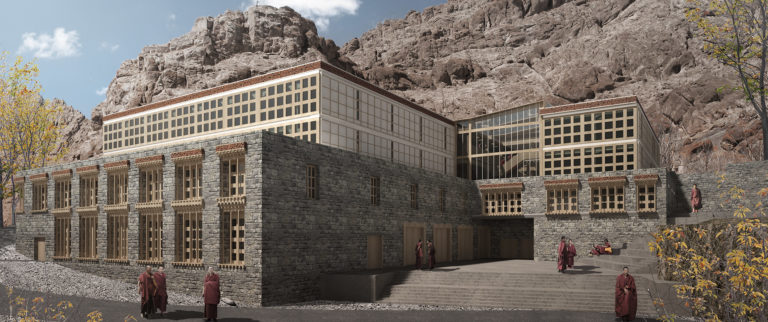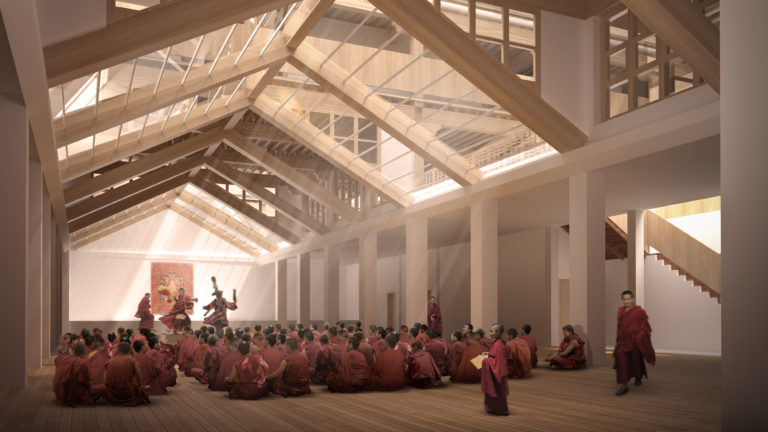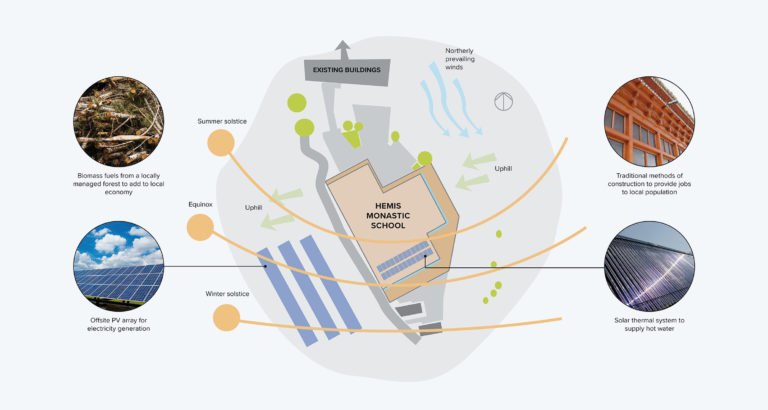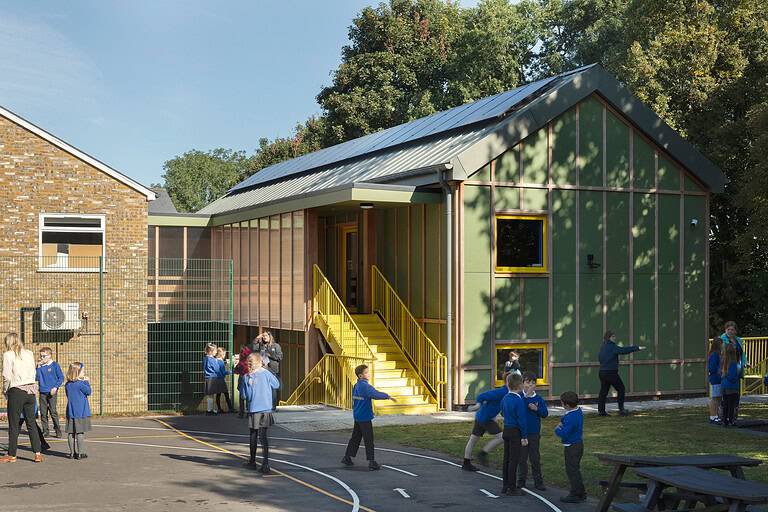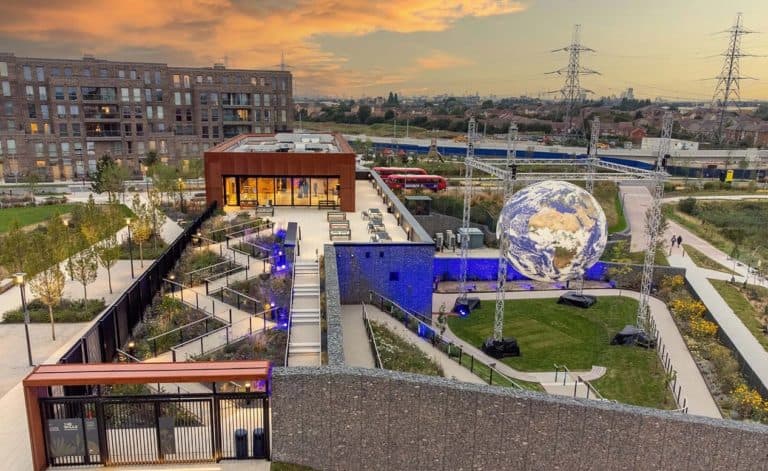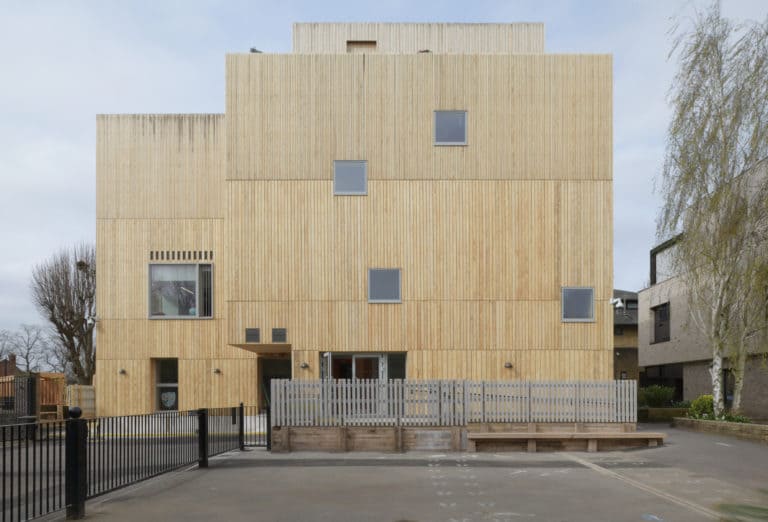Next to a 17th Century Buddhist monastery in the Indian Himalayas, this new school for young Buddhist monks will bring modern levels of comfort to improve learning while maintaining their cultural traditions.
XCO2’s challenge was to achieve thermal comfort levels through mostly passive means in a cold, high-altitude desert location, with annual temperature swings of 60 degrees. By using dynamic thermal modelling from the earliest stages of design, we were able to test and fine-tune measures to improve building performance.
Different approaches were taken to address the needs of the two main uses: the classrooms benefit from southeast-facing glazing for passive heating, coupled with super-insulation, whereas the student dormitories utilise Trombe walls, relying on the climate almost-constant sun, even in the coldest times of the year. The concept works with a double glazed and thermal mass façade which traps the sun, and openings between the façade cavity and the room allow occupants to control the supply of naturally heated air into the room.
In summer, the external glazing can be opened, hence avoiding overheating. The limiting daylight is not a restriction, given the time of the day the dormitories are used.
The rest of the building is super insulated and have spaces that can be converted from external to internal, through the use of simple glazed panels, creating buffer zones to reduce heat loss in winter. Simulations have shown that, with these features, the building can greatly increase winter-time temperature without the need for active systems. Wood-burning stoves can be used in a few key locations to top-up any heat demands.
Detailed computational fluid dynamics were also used to design and properly size the solar latrines on-site, dark-painted solar chimneys which are used to passively ventilate toilets, removing odours and flies. The site’s greywater is treated naturally and then discharged underground.
Finally, the building is powered by photovoltaic panels and solar thermal for water heating, making the building net zero carbon.


